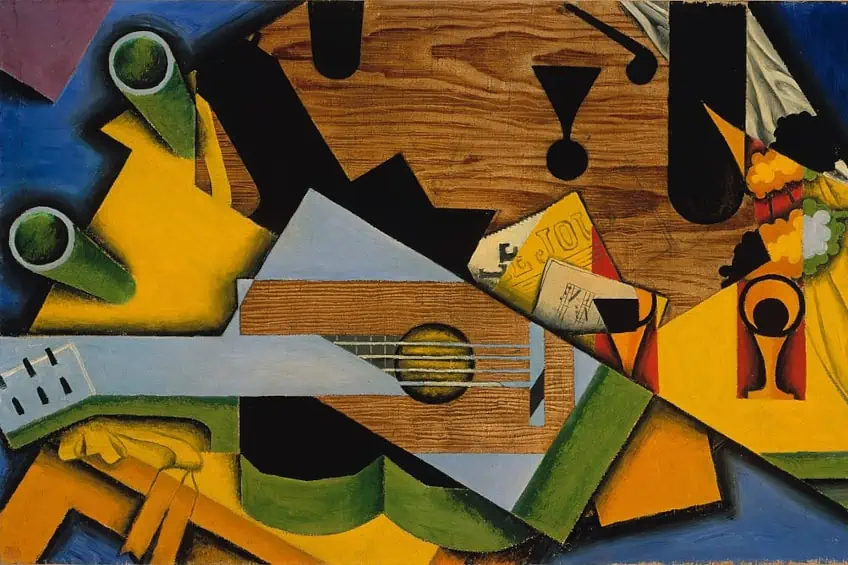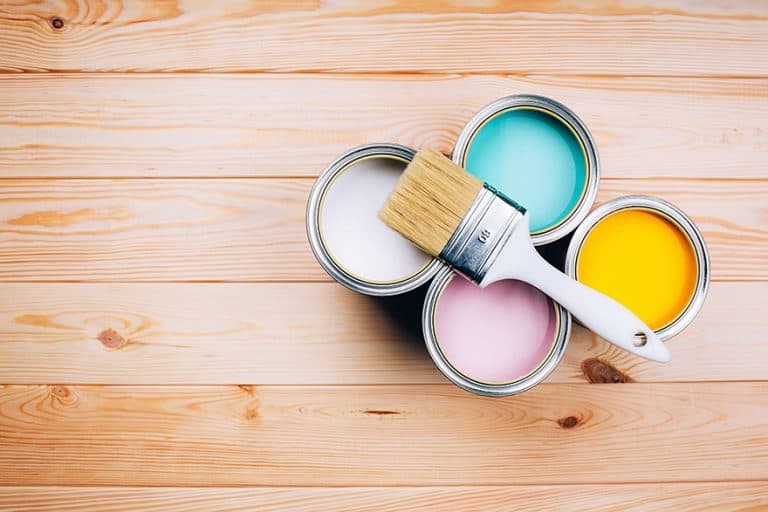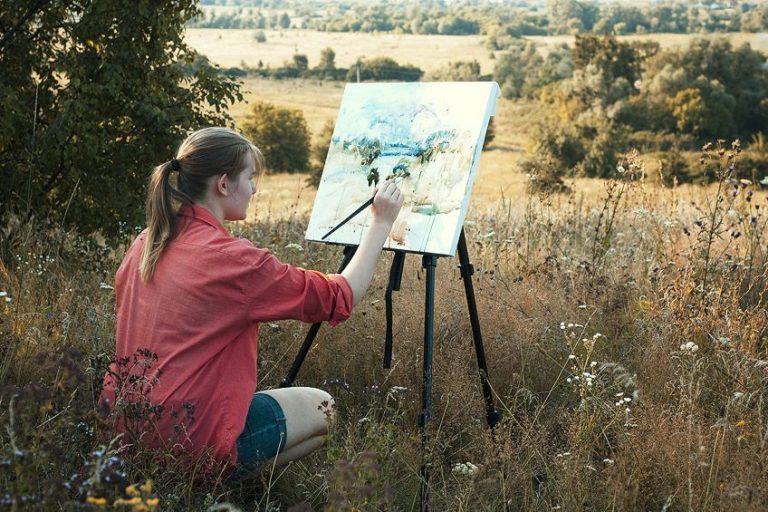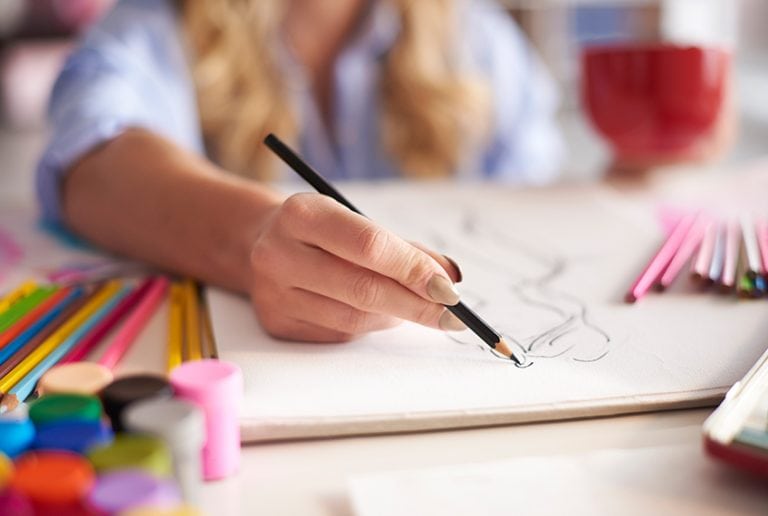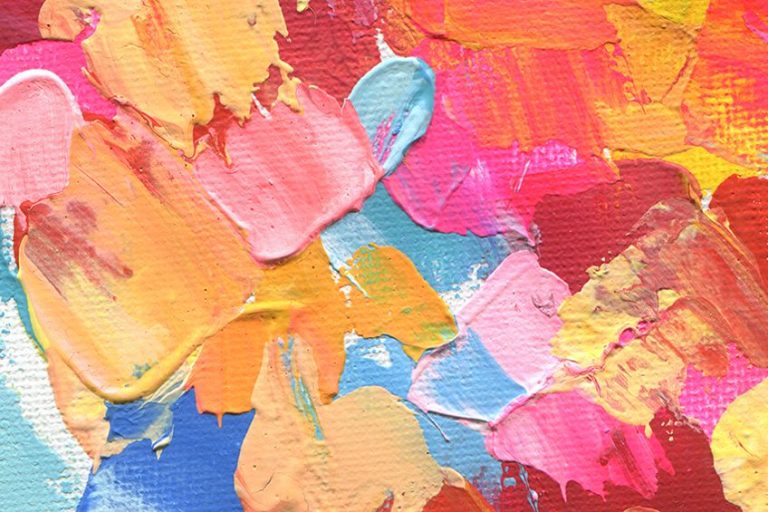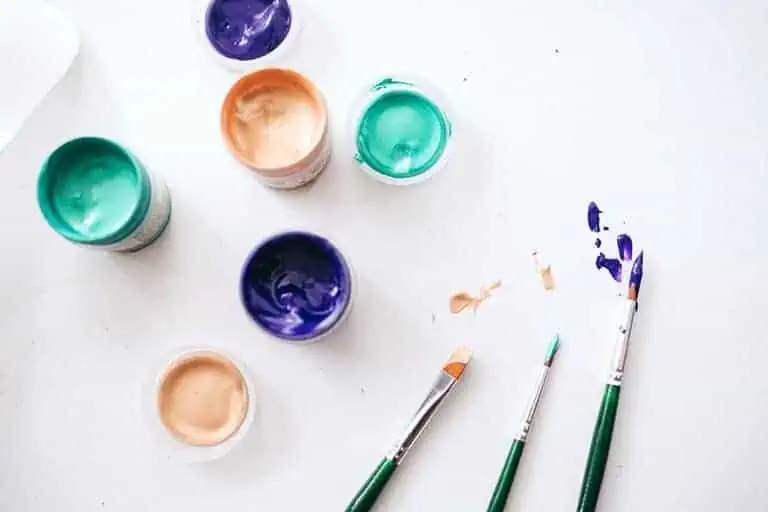Types of Painting – A Guide to Genres, Styles, and Techniques
This post may contain affiliate links. We may earn a small commission from purchases made through them, at no additional cost to you.
The different painting types, styles, and techniques are often confused, and their sheer number can be overwhelming. Below, we explore the different types of paintings, some of the most popular painting styles and techniques that are used to make them, as well as how to identify them and what makes them unique.
Table of Contents
Types of Paintings
It may surprise you to learn that there are only a few different kinds of paintings, and that these painting types are different in both painting styles and painting techniques. Painting types or genres have to do with the composition and theme of a painting and can be made using a variety of different painting techniques or art styles.
For example, the famous Mona Lisa (1506) by da Vinci is a portrait type of painting. It was painted in the Renaissance painting style using an oil on poplar wood technique.
Portrait Painting
One of the most popular painting types, portrait paintings aim to capture a character on a canvas. Portrait paintings can be found in all mediums and are not limited to only human characters. Portraits can also contain multiple characters or even be a self-portrait such as Van Gogh’s Self-Portrait (1889). These forms of paintings are often done to memorialize people or for family records. One of the most famous portrait artists is Giuseppe Arcimboldo, who uses various plants and animals to create unusual portraits of people such as his painting Vertumnus (1591).
 The Danish Artist Bertha Wegmann Painting a Portrait by Jeanna Bauck (late 1870’s); Nationalmuseum, Public domain, via Wikimedia Commons
The Danish Artist Bertha Wegmann Painting a Portrait by Jeanna Bauck (late 1870’s); Nationalmuseum, Public domain, via Wikimedia Commons
Landscape Painting
Where portrait paintings focus on the character, landscape paintings aim to capture the natural environment. Landscape paintings emphasize forests, skies, oceans, mountains, valleys, and all other types of natural scenery. Although the main focus is nature, some man-made structures can also be included. One of the most famous landscape artists is van Gogh with paintings such as The Starry Night (1889) and Wheat Field with Cypresses (1889).
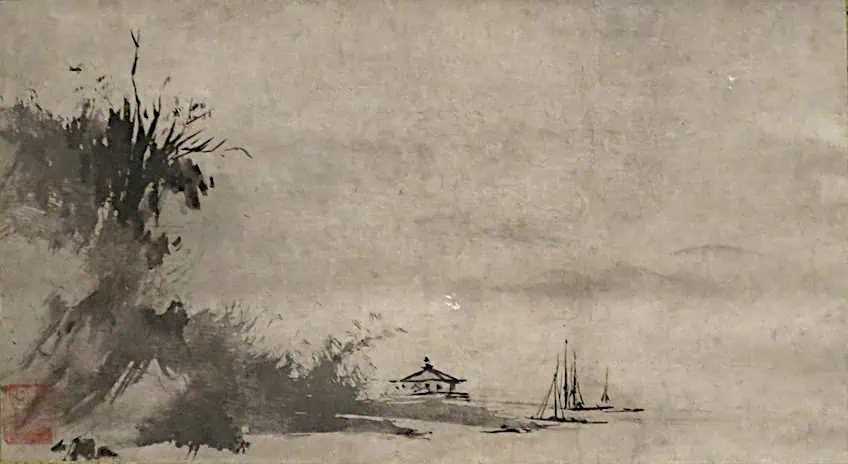 Ink on paper landscape attributed to Sesshu Toyo (15th century); attributed to Sesshū Tōyō, Public domain, via Wikimedia Commons
Ink on paper landscape attributed to Sesshu Toyo (15th century); attributed to Sesshū Tōyō, Public domain, via Wikimedia Commons
Still-Life Painting
Still-life paintings depict everyday objects and elements. While they may seem plain and boring on the surface, still-lifes often paint a complex narrative. Still-life paintings also require an understanding of color, composition, and texture, so are common types of painting for beginner painters to hone their skill.
Well-known artists who have painted still-life paintings are Paul Gauguin, Salvador Dalí, and Pieter Claesz. Paul Cézanne’s Curtain, Jug, and Fruit (1894) is also a great example of a still-life painting.
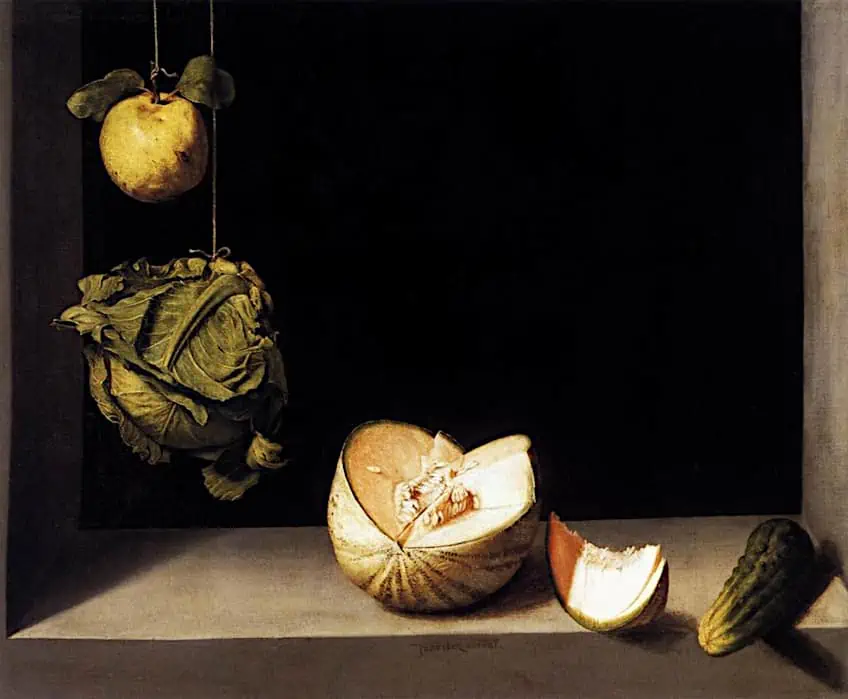 Quince, Cabbage, Melon, and Cucumber by Juan Sánchez Cotán (c. 1600); Juan Sánchez Cotán, Public domain, via Wikimedia Commons
Quince, Cabbage, Melon, and Cucumber by Juan Sánchez Cotán (c. 1600); Juan Sánchez Cotán, Public domain, via Wikimedia Commons
Abstract Painting
One of these most recognizable forms of paintings are abstract paintings. Abstract paintings are both an art type and art style. While the meaning behind abstract paintings can be difficult to discern, their main purpose is to present a distorted interpretation of reality using various shapes, colors, and lines. A famous abstract painting is Tableau I (1921) by Piet Mondrian. Mondrian distilled the subject of his pieces down to their most basic elements to explore the essence and symbolic meanings of the subject.
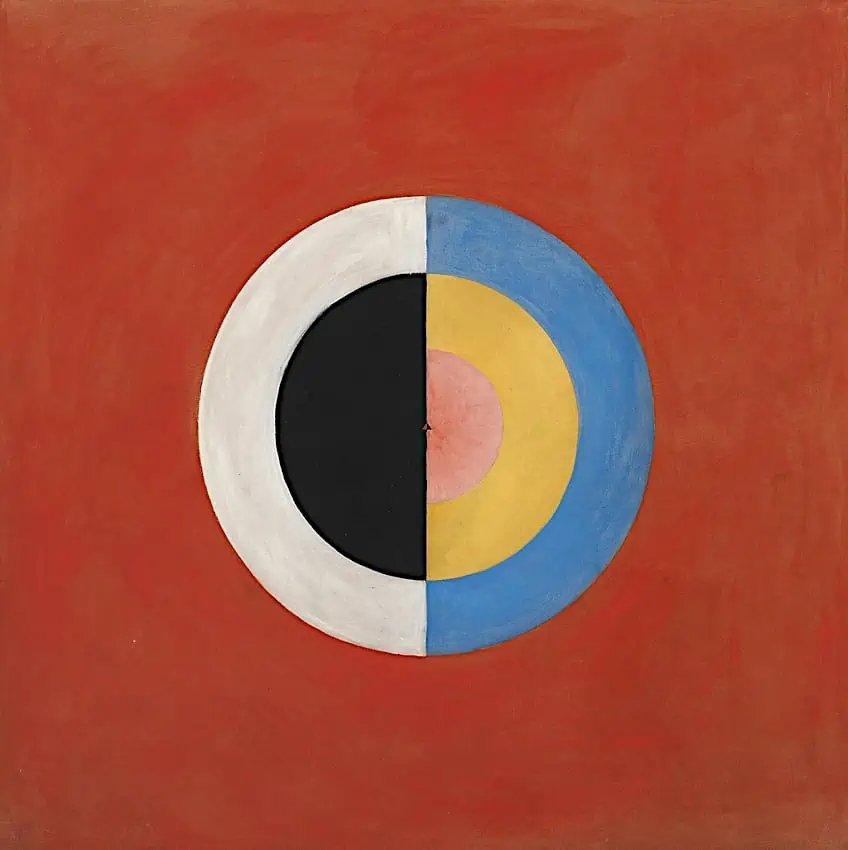 Svanen, nr 17, grupp IX/SUW, serie SUW/UW by Hilma af Klint (1915); Hilma af Klint, Public domain, via Wikimedia Commons
Svanen, nr 17, grupp IX/SUW, serie SUW/UW by Hilma af Klint (1915); Hilma af Klint, Public domain, via Wikimedia Commons
History Painting
History paintings aim to capture important moments in time as such, the subject of a history painting is the most important aspect of the piece. While these paintings depict important historical events, they are through the eyes of the artist and therefore often contain a moral message or commentary. A great example of a historical painting is The Death of Caesar (1867) by Jean-Léon Gérôme, who captured the aftermath of this historical event.
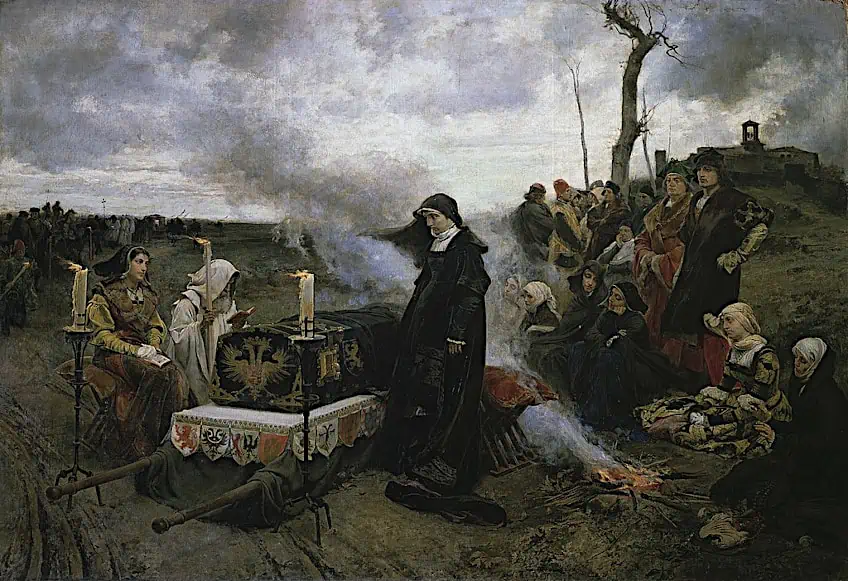 Queen Joanna the Mad by Francisco Pradilla Ortiz (1877); Francisco Pradilla y Ortiz, Public domain, via Wikimedia Commons
Queen Joanna the Mad by Francisco Pradilla Ortiz (1877); Francisco Pradilla y Ortiz, Public domain, via Wikimedia Commons
Religious Painting
Paintings depicting religious or mythological events or creatures are considered religious paintings. While some of these paintings were commissioned for specific purposes, others served as a religious outlet or form of worship for artists. Other religious paintings were made as a commentary on religion or religious practices. Leonardo da Vinci’s The Last Supper (1498) is arguably one of the most well-known religious paintings.
 Ethiopian Orthodox Icon by an unknown artist (late 17th to early 18th Century); Ethiopian Orthodox, CC0, via Wikimedia Commons
Ethiopian Orthodox Icon by an unknown artist (late 17th to early 18th Century); Ethiopian Orthodox, CC0, via Wikimedia Commons
Allegory Painting
An allegory is something with a hidden meaning. Allegory paintings use their subjects to indirectly portray emotions, morals, and concepts. This type of painting is great for conveying complex ideas and multilayered narratives. Allegory paintings can be very subjective, which only adds to their endless interpretations. The Alchemist (1558) by Pieter Brueghel the Younger is a beautiful example of an allegory painting. This complex piece warns against the dangers of greed taking that which is unearned.
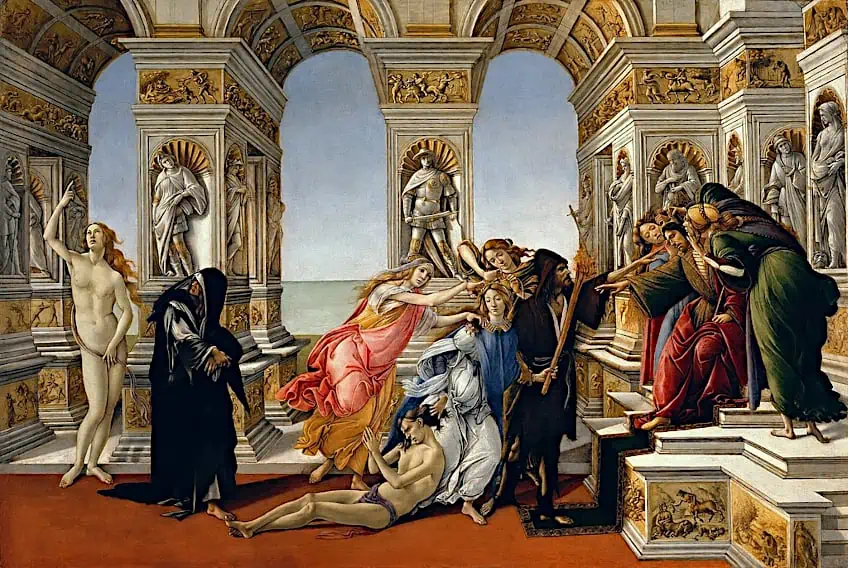 Calumny of Apelles by Sandro Botticelli (between c. 1496 and 1497); Sandro Botticelli, Public domain, via Wikimedia Commons
Calumny of Apelles by Sandro Botticelli (between c. 1496 and 1497); Sandro Botticelli, Public domain, via Wikimedia Commons
Painting Styles vs. Painting Techniques
Now that you know more about the different painting forms, we will be exploring the different painting styles and techniques used to create them. Painting styles refer to the way in which the artist chooses to express their subject or vision within their piece. There are a limited number of painting types, so your painting style can really help your painting stand out and make it unique.
Painting techniques are the methods of using various tools and application of different mediums to create the painting. New techniques are constantly being developed as artists keep inventing new ways to create paintings.
Different Painting Styles
Painting styles are usually connected to a particular art movement and many of them are even a direct result of the movements or styles that came before them. There are over 70 different art styles today and more will probably be created in the future. We have chosen the most influential art styles and explored their history and contributions below. While some are distinctive and others can be difficult to differentiate, each art style is unique in its use and message.
Renaissance and High Renaissance
Renaissance and high paintings were popular from 1400 to 1600 and represented a revival of interest in the ancient Greco-Roman culture of the time. These two painting styles created many of the different painting techniques we will discuss later including foreshortening, chiaroscuro, and sfumato. Famous renaissance paintings include Birth of Venus (1486), The Wedding Dance (1566), and Portrait of Ginevra Benci (1478).
 Adoration of the Shepherds by Domenico Ghirlandaio (between 1483 and 1485); Domenico Ghirlandaio, Public domain, via Wikimedia Commons
Adoration of the Shepherds by Domenico Ghirlandaio (between 1483 and 1485); Domenico Ghirlandaio, Public domain, via Wikimedia Commons
Mannerism
In contrast to the renaissance focus on balance, proportion, and idealistic beauty, mannerism is characterized by the distortion of the human figure in an elegant and sensual way. Mannerism was most popular in the 16th century and brought us paintings such as Madonna with the Long Neck (1535) and The Wedding at Cana (1563).
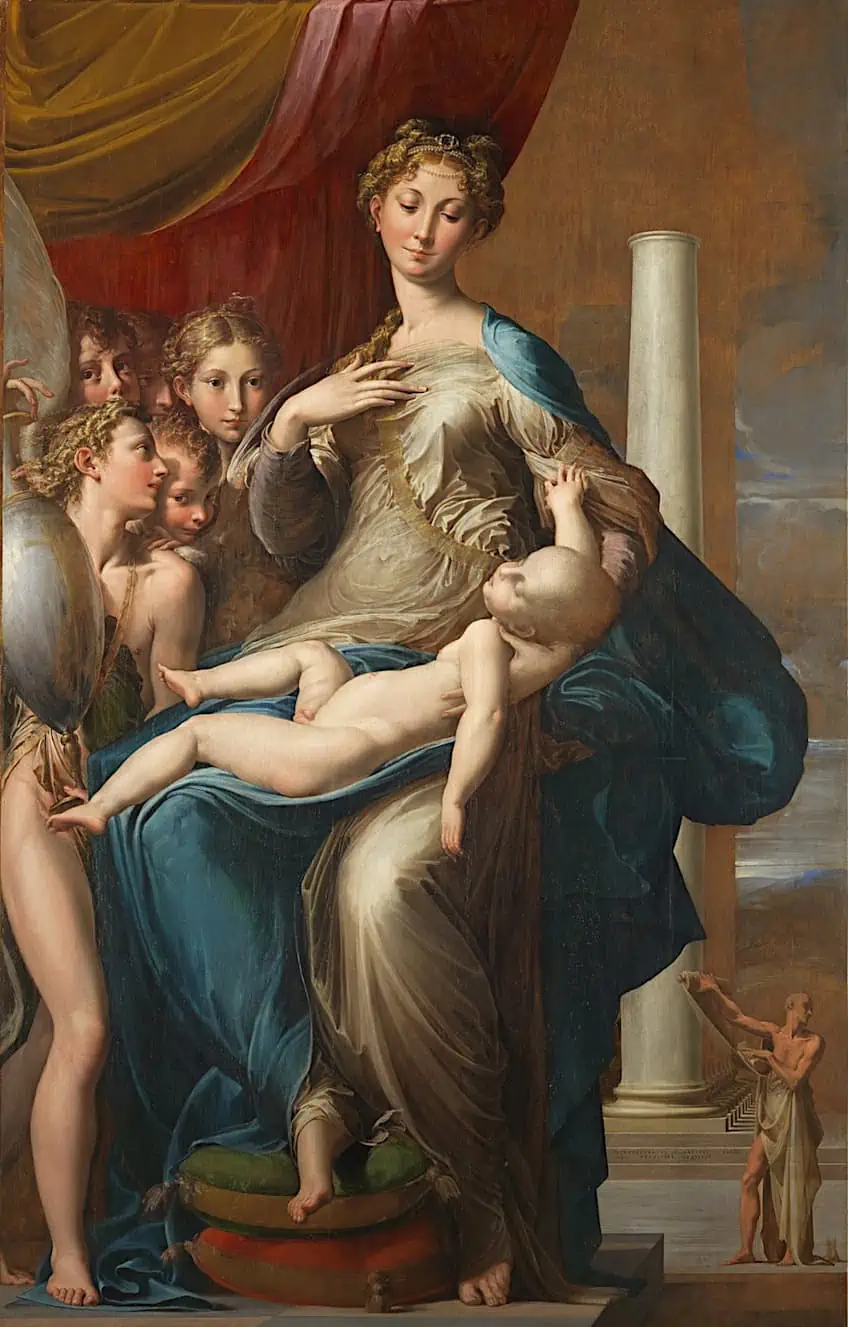 Madonna and Child with Angels also known as The Madonna with the Long Neck by Parmigianino (from 1534 – 1540); Parmigianino, Public domain, via Wikimedia Commons
Madonna and Child with Angels also known as The Madonna with the Long Neck by Parmigianino (from 1534 – 1540); Parmigianino, Public domain, via Wikimedia Commons
Baroque
The Baroque art style is full of drama and dynamic movement, while still retaining a sense of realism. Baroque’s seemingly inconsistent and contradictory style gives it a strange atmosphere that evokes a lot of emotions. Baroque painting forms were popular from the early 1600 till the middle of the 18th century. Some well-known baroque paintings include The Calling of Saint Matthew (1600) and The Penitent Magdalene (1640) by Caravaggio.
 Penitent Magdalene by Caravaggio (c. 1594 – 1596); Caravaggio, Public domain, via Wikimedia Commons
Penitent Magdalene by Caravaggio (c. 1594 – 1596); Caravaggio, Public domain, via Wikimedia Commons
Neoclassicism
Neoclassicism was created in contrast to the baroque painting style. Where baroque is dynamic and decorative, neoclassicism is more sober and timeless. The neoclassical art style is characterized by strong uniform lines, obvious brushstrokes, and a more muted color palette. This style is well-composed and stays true to its subject’s dress and background, which gives it a harmonious and ordered feeling.
The Death of Socrates (1787) by Jacques-Louis David wonderfully showcases the accurate dress and dark color palette of neoclassicism that was popular from 1750 to 1850.
 Portrait of Madame Récamier by Jacques-Louis David (1800); Jacques-Louis David, Public domain, via Wikimedia Commons
Portrait of Madame Récamier by Jacques-Louis David (1800); Jacques-Louis David, Public domain, via Wikimedia Commons
Romanticism
Romanticism is an art style that was popular from the late 18th century until the mid-19th century and highlights the influence of emotions and sensations on the world. This art style was highly individualistic and respectful of nature, which reflected the strong interest of the time in human psychology and the natural world. Caspar Friedrich’s painting Wanderer above the Sea of Fog (1818) is a great example of this style.
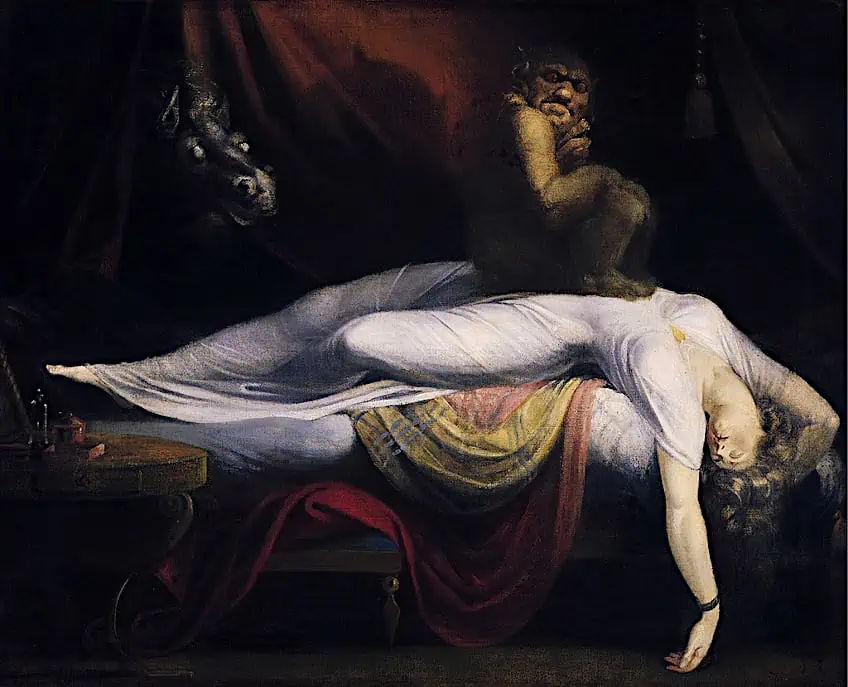 The Nightmare by John Henry Fuseli (1781); Henry Fuseli, Public domain, via Wikimedia Commons
The Nightmare by John Henry Fuseli (1781); Henry Fuseli, Public domain, via Wikimedia Commons
Realism
Realism is an art style that rejected the emotional depictions of romanticism, and instead focused on representing its subjects honestly. This style focused on everyday settings and people, and often explored topics that were considered controversial or inappropriate. There was an emphasis on the struggles of the poor and working class that mirrored the late 19th century focus on workers and their rights. The Gleaners (1857) by Jean-François Millet is a very impactful realism painting depicting three women gleaning a field for stray wheat after a harvest.
 The Painter’s Studio by Gustave Courbet (1855); Gustave Courbet, Public domain, via Wikimedia Commons
The Painter’s Studio by Gustave Courbet (1855); Gustave Courbet, Public domain, via Wikimedia Commons
Impressionism
Impressionism uses obvious brush strokes, accurate depictions of light, and open compositions to create striking pieces full of movement and unique perspectives. Impressionism is spontaneous, with artists often using the plein-air painting technique to capture their subject in the moment. For this reason, impressionist paintings tend to be landscape paintings or paintings of ordinary scenes.
Claude Monet is a very popular impressionist artist who painted works such as Impression Sunrise (1872) and Woman with a Parasol (1875).
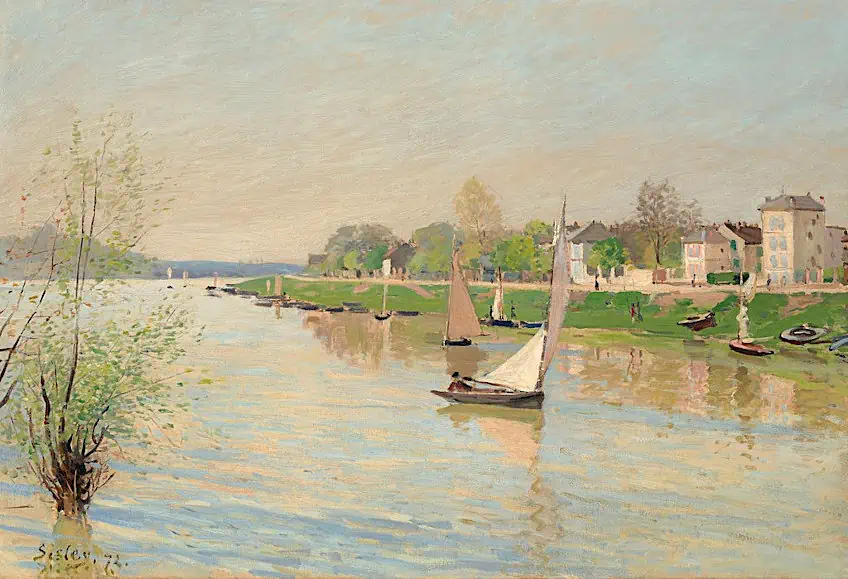 The Seine at Argenteuil by Alfred Sisley (1872); Alfred Sisley, Public domain, via Wikimedia Commons
The Seine at Argenteuil by Alfred Sisley (1872); Alfred Sisley, Public domain, via Wikimedia Commons
Pointillism
One of the most recognizable art styles, pointillism uses a series of small and distinct dots to create an image when viewed from a distance. The dots are different colors and are combined to create shading, highlights, and blending.
Pixels in computer screens use a similar concept to produce the images you see.
One of the most well-known pointillism artists is Georges Seurat with famous pieces including The Eiffel Tower (1889) and A Sunday Afternoon on the Island of La Grande Jatte (1886).
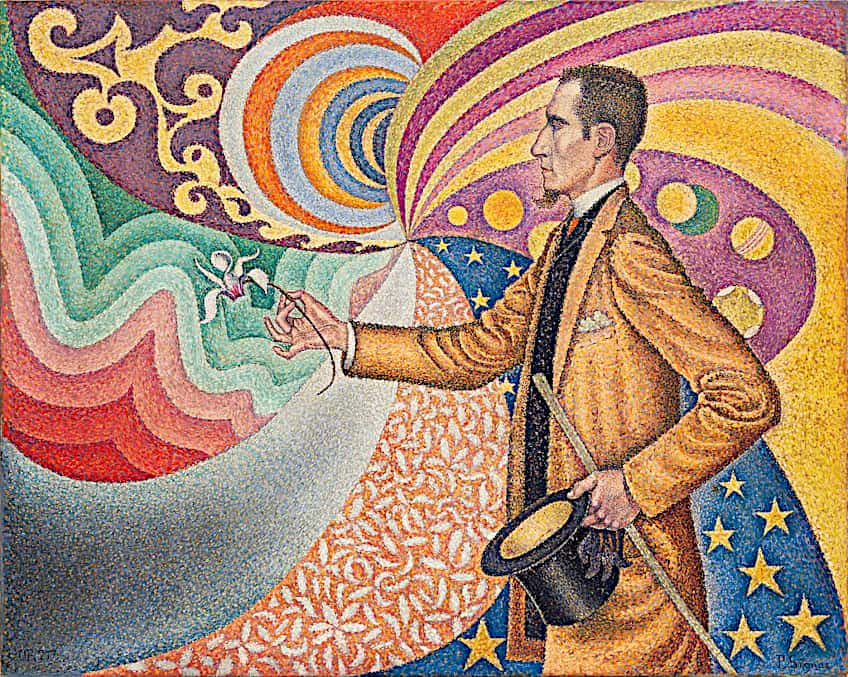 Opus 217. Against the Enamel of a Background Rhythmic with Beats and Angles, Tones, and Tints, Portrait of M. Félix Fénéon in 1890 by Paul Signac (1890); Paul Signac, Public domain, via Wikimedia Commons
Opus 217. Against the Enamel of a Background Rhythmic with Beats and Angles, Tones, and Tints, Portrait of M. Félix Fénéon in 1890 by Paul Signac (1890); Paul Signac, Public domain, via Wikimedia Commons
Art Nouveau
Art Nouveau is a painting style that still has a great influence today. This style is characterized by long flowing lines, organic shapes, and sensual embellishment and is used in many fields from interior design and architecture to glass and jewelry. The Peacock Skirt (1893) by Aubrey Beardsley is an ink drawing that highlights the curved lines of this painting style.
 Conquest of Passage by Henri de Toulouse-Lautrec (1896); Henri de Toulouse-Lautrec, Public domain, via Wikimedia Commons
Conquest of Passage by Henri de Toulouse-Lautrec (1896); Henri de Toulouse-Lautrec, Public domain, via Wikimedia Commons
Fauvism
The fauvism period was a very short art movement from around 1905 to 1910, however, was one of the first contemporary art movements. This art style was largely influenced by pointillism and is characterized by erratic brushstrokes using vivid colors and very simplified or abstract subjects. Le Bonheur de Vivre (1905) by Henri Matisse is a striking example of fauvism.
 Collioure in August by Henri Matisse (c. 1911); Henri Matisse, Public domain, via Wikimedia Commons
Collioure in August by Henri Matisse (c. 1911); Henri Matisse, Public domain, via Wikimedia Commons
Expressionism
Expressionism is an art style in which artists create a distorted reality that expresses their inner feelings or ideas. This style was popular in the early 1900s. Artists use distortion, primitivism, and exaggeration to create vivid pieces often with garish colors, extreme angles, and flattened forms. The Scream (1893) by Edvard Munch highlights all these characteristics of expressionism.
 In the Café Garden by Ernst Ludwig Kirchner (1914); Ernst Ludwig Kirchner, Public domain, via Wikimedia Commons
In the Café Garden by Ernst Ludwig Kirchner (1914); Ernst Ludwig Kirchner, Public domain, via Wikimedia Commons
Cubism
Cubism is a unique art style that breaks its subjects down into abstract shapes and paints them on distinct planes from various perspectives, thereby creating a three-dimensional space within the two-dimensional canvas. The artist merges the foreground and background to emphasize the flat canvas, rather than create depth.
The beginning of the 20th century marked the invention of this style by Pablo Picasso, Georges Braque and Juan Gris
 Still Life with a Guitar by Juan Gris (1913); Juan Gris, Public domain, via Wikimedia Commons
Still Life with a Guitar by Juan Gris (1913); Juan Gris, Public domain, via Wikimedia Commons
Constructivism
Constructivism is an art style that is characterized by strong geometric shapes with strong lines and bright colors. Constructivist art makes use of industrial materials and design to create a strong visual image. Attentive Worker (1913) by Kazimir Malevich is a famous example of a constructivism painting.
 Reservist of the First Division by Kazimir Malevich (1914); Kazimir Malevich, Public domain, via Wikimedia Commons
Reservist of the First Division by Kazimir Malevich (1914); Kazimir Malevich, Public domain, via Wikimedia Commons
Surrealism
The surrealism art style is created using strange and bizarre imagery, which gives paintings a dream-like quality. The subjects are often distorted and juxtaposed with other seemingly normal or random images in illogical situations. Surrealism was popular from the early to mid-20th century. Salvador Dalí is a well-known surrealist artist from the 20th century. Some of his works include The Persistence of Memory (1931) and The Temptation of Saint Anthony (1946).
In Mexico artists like Frida Kahlo combined Surrealism with Magical Realism to create a unique style specific to Central American art.
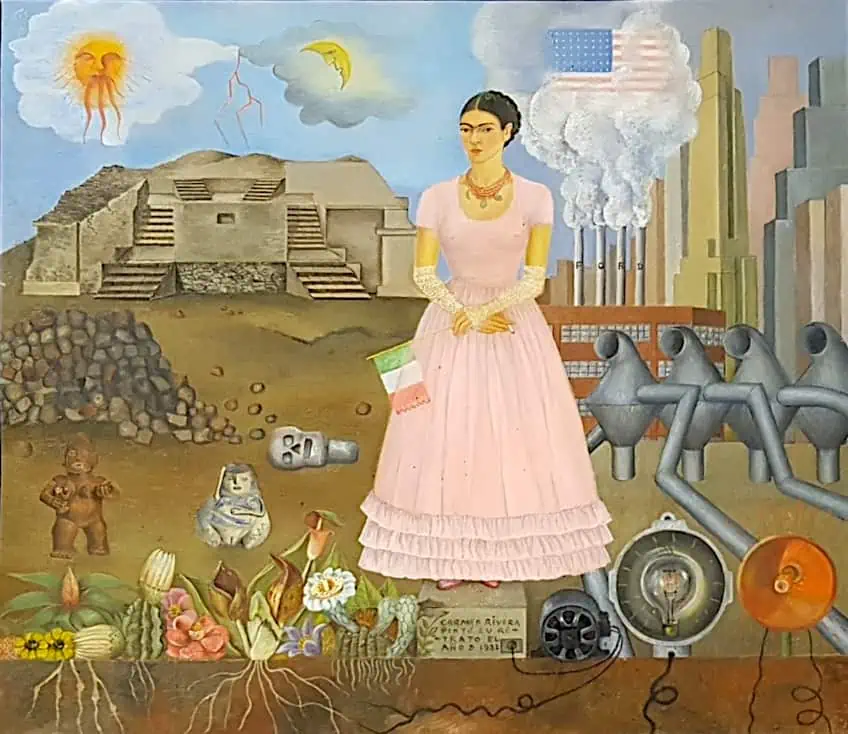 Self Portrait on the Borderline Between Mexico And The United States by Frida Kahlo (1932); Ambra75, CC BY-SA 4.0, via Wikimedia Commons
Self Portrait on the Borderline Between Mexico And The United States by Frida Kahlo (1932); Ambra75, CC BY-SA 4.0, via Wikimedia Commons
Abstract Expressionism
Abstract expressionism is all about spontaneity and emotional expression. This movement is not characterized by any particular style; rather, the feelings and message of the artist are key. This is expressed in automatic, spontaneous, or subconscious mark-making using a variety of techniques. The Liver is the Cock’s Comb (1944) by Arshile Gorky is a noteworthy abstract painting with many hidden meanings and innuendos.
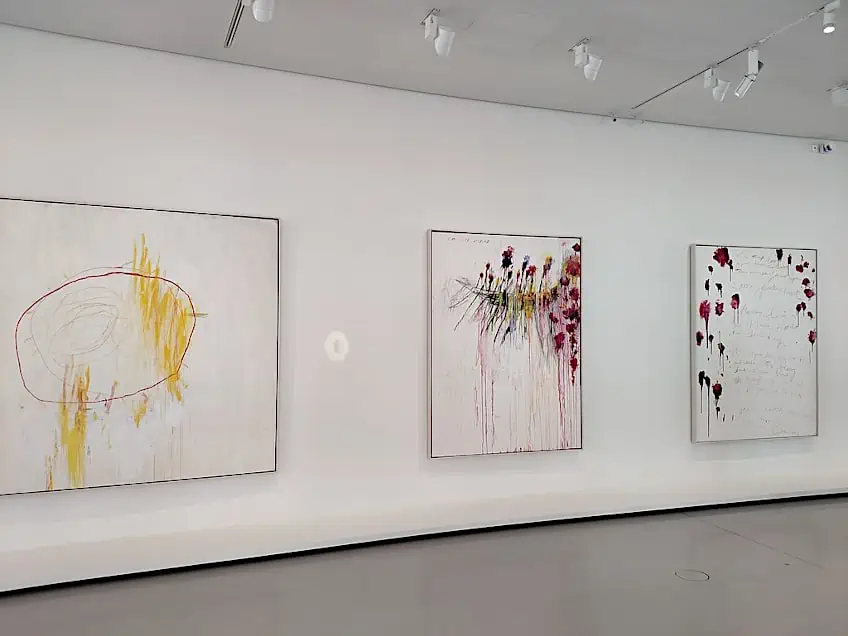 Abstract Expressionist paintings by Cy Twombly at the Bourse de Paris exhibition, Pinault Foundation, April 2023; Emilio Luque, CC BY-SA 4.0, via Wikimedia Commons
Abstract Expressionist paintings by Cy Twombly at the Bourse de Paris exhibition, Pinault Foundation, April 2023; Emilio Luque, CC BY-SA 4.0, via Wikimedia Commons
Pop Art
Pop art is an art style that aims to challenge traditional conceptions of what is considered true art. This art style not only includes many references to pop culture but also uses everyday materials such as magazines or comic books often. Pop art is vibrant and colorful and aims to catch your attention and keep it. One of the most recognizable pop art pieces is Crying Girl (1963) by Roy Lichtenstein.
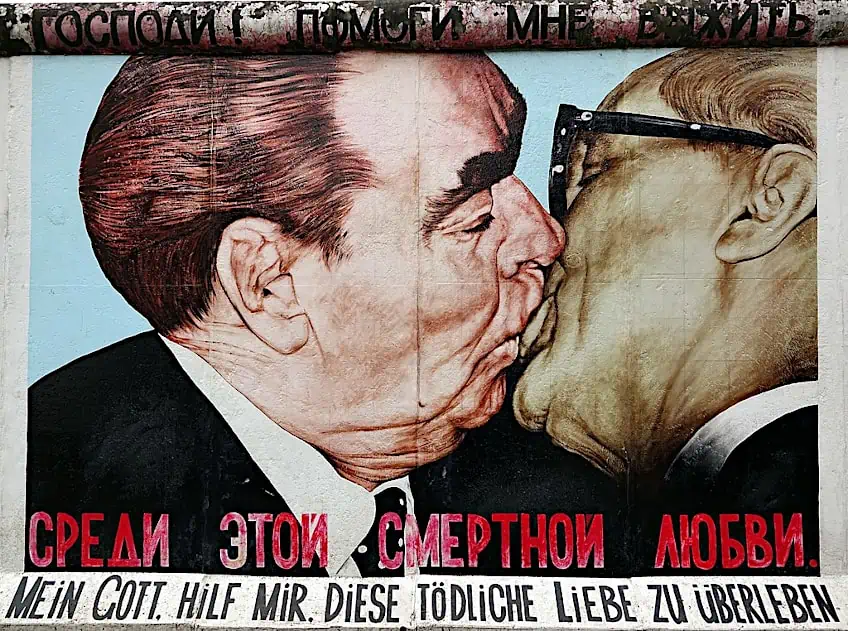 My God, Help Me to Survive This Deadly Love by Dmitri Vrubel (1990); Dmitri Vrubel, CC BY-SA 4.0, via Wikimedia Commons
My God, Help Me to Survive This Deadly Love by Dmitri Vrubel (1990); Dmitri Vrubel, CC BY-SA 4.0, via Wikimedia Commons
Photorealism
Photorealism is one of the most technically difficult art styles to achieve. This style involves artists painting a subject or scene that is true-to-life and as close as possible to the real thing. To achieve photorealism, you have to have a deep understanding of lighting and shadows as well as color theory.
Each brushstroke is purposeful to create a piece that is akin to a photograph or the subject. Kandy Kane Rainbow (1994) is an oil painting by Charles Bell that looks almost impossibly real.
 Jim, Weyman, Peter; End of Roll Vacation Slide 5′ x 7′ by David T. Kessler (1980); DTKessler, CC BY-SA 4.0, via Wikimedia Commons
Jim, Weyman, Peter; End of Roll Vacation Slide 5′ x 7′ by David T. Kessler (1980); DTKessler, CC BY-SA 4.0, via Wikimedia Commons
Minimalism
The minimalism art style is one of the youngest art styles. It is an almost extreme form of abstract expressionism where simple geometric shapes are used to convey an emotion, experience, or a subjective rendering of the real world. This art style is deceptively simple and has a modern aesthetic. Famous minimalist paintings include Red Circle on Black (1965) by Jiro Yoshihara and 10 Lignes au Hasard (1975) by François Morellet.
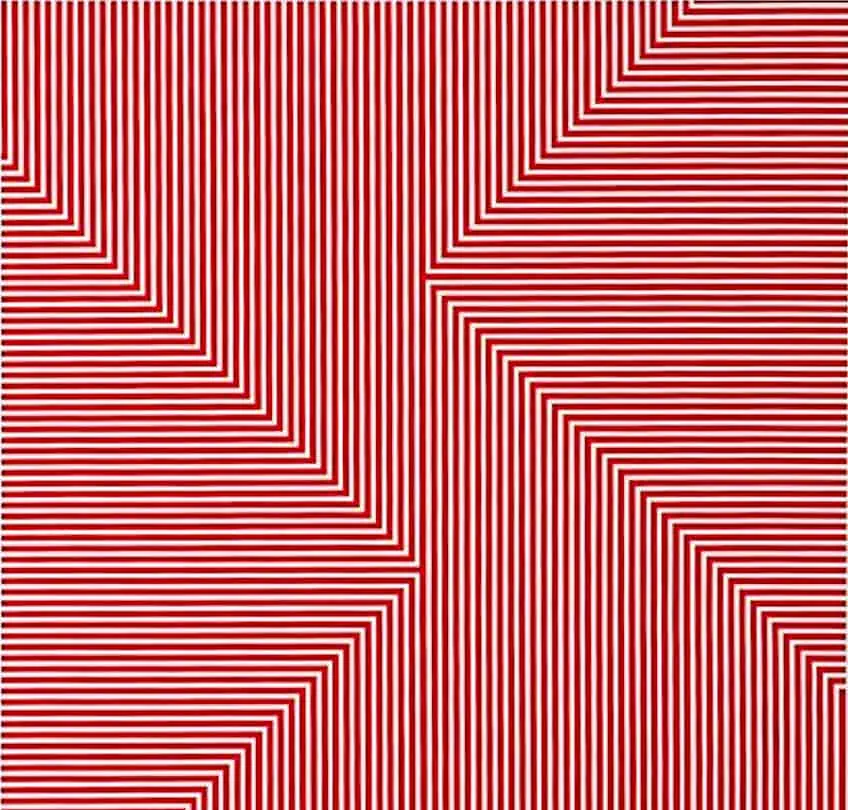 Album de 10 sérigraphies sur 10 ans by François Morellet (1975); François Morellet, Public domain, via Wikimedia Commons
Album de 10 sérigraphies sur 10 ans by François Morellet (1975); François Morellet, Public domain, via Wikimedia Commons
Different Painting Techniques
There are hundreds of different methods, mediums, and perspectives used to produce different art techniques. Painting techniques tend to evolve alongside technology and are key to understanding how art is created regardless of the different styles and types of painting. Due to the sheer number of different painting techniques out there, we have selected a few of the most popular ones to include below.
Perspective Techniques
Perspective techniques involve representing three-dimensional objects on the two-dimensional canvas in visually interesting ways. This is done by changing the lighting and shading of the subject or merely painting it from an unusual viewpoint. Perspective techniques create the illusion of depth or produce unique optical illusions.
Aerial Perspective
Aerial perspective is a painting technique that creates depth by painting distant objects fainter and with a blue tinge. Also known as atmospheric perspective, this technique relies on the fact that cool colors have a receding and shrinking effect when contrasted with warmer colors in the foreground. This technique is often used to paint distant landscapes such as the mountains in Albert Bierstadt’s Whyte’s Lake (1877).
Anamorphosis
Anamorphosis is one of the most intriguing perspective techniques. Paintings using this technique seem distorted at first glance, however, this distortion is removed when they are viewed from a particular angle reflected through a curved mirror. Jean François Niceron is famous for his anamorphic paintings.
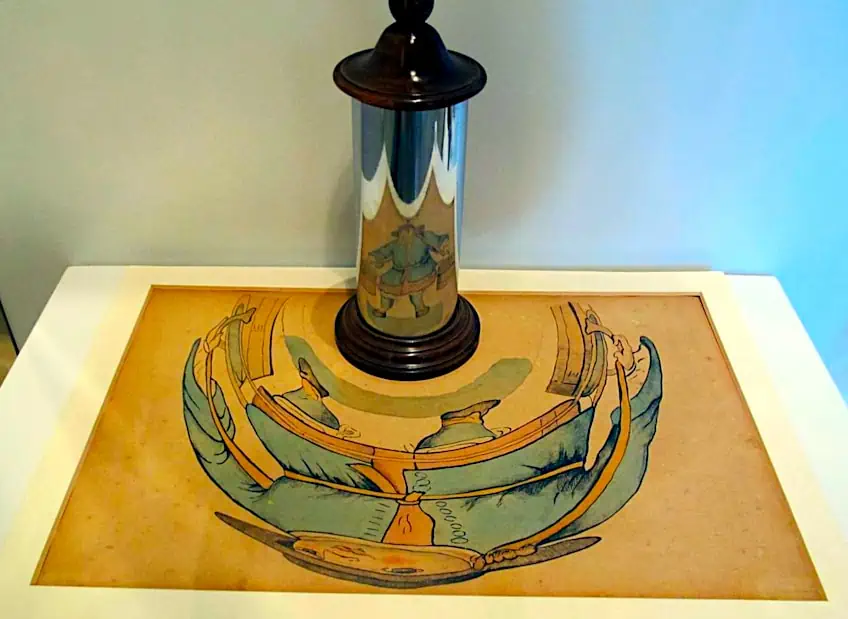 Anamorphic image with reflection on curved surface by Jean François Niceron; Museo Galileo, CC BY-SA 3.0, via Wikimedia Commons
Anamorphic image with reflection on curved surface by Jean François Niceron; Museo Galileo, CC BY-SA 3.0, via Wikimedia Commons
Foreshortening
Foreshortening is another art technique that uses optical illusion. This technique involves depicting a subject as though they are receding into the background of a three-dimensional space. Foreshortening does this by forcing you to view the subject from a certain angle or perspective such as viewing a person from the feet or the top-down. Nearer objects are also painted as larger while further objects are painted as smaller.
Sotto in Su
Sotto in su translates to “seen from below” and is an illusionistic painting technique used for painting ceilings. This technique is used to create illusions of open sky or whimsical clouds and does this by blending the painting and the architecture of a structure together.
The ceiling of the Camera degli Sposi uses this technique as well as foreshortening to construct an impactful piece that makes it feel as though you are looking up at the heavens.
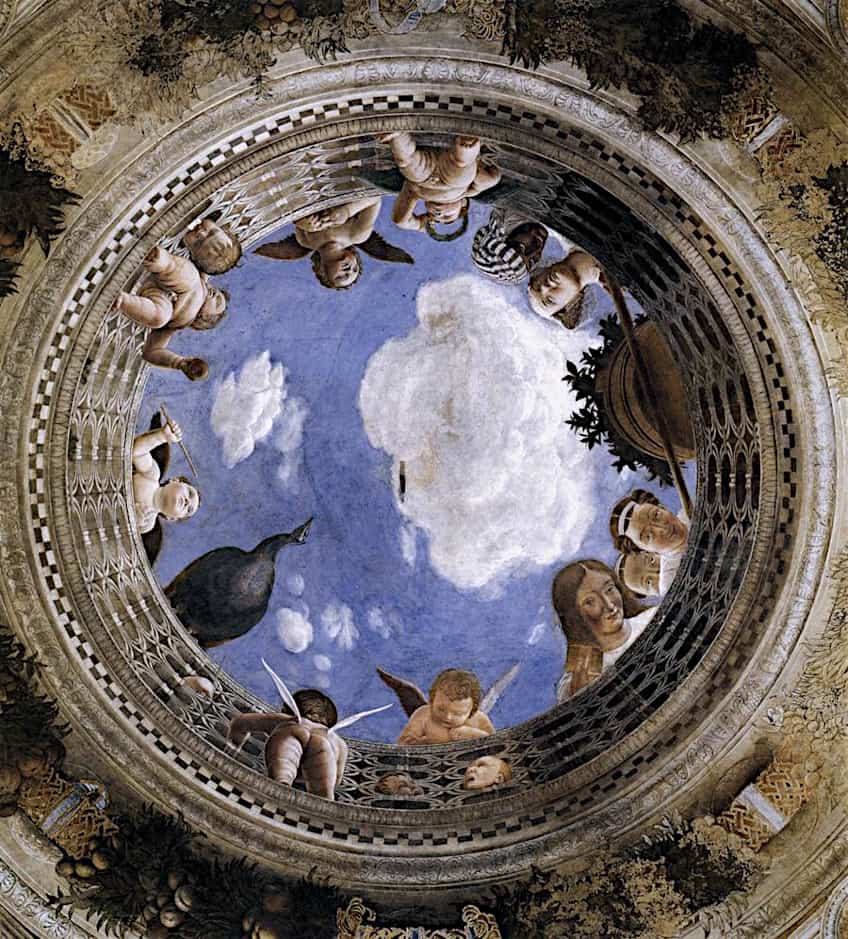 Detail of the Frescoes in the Camera degli Sposi by Andrea Mantegna (1473); Andrea Mantegna, Public domain, via Wikimedia Commons
Detail of the Frescoes in the Camera degli Sposi by Andrea Mantegna (1473); Andrea Mantegna, Public domain, via Wikimedia Commons
Method Techniques
There is a wide variety of methods that artists use to lay down paint on their canvases. From thin flicks to thick peaks, paint thickness, color, and position can all impact the look and feel of the final piece.
Action Painting
Action painting is a painting method that uses splashes, smears, or drips to paint your canvas. Although mainly used in abstract pieces, this method is also used in more realistic paintings. Action painting emphasizes the dynamic and grand gestures that were used to mark the canvas as well as their meaning.
Camaieu and Grisaille
Both camaieu and grisaille are painting techniques that are used to create monochromatic art. Camaieu uses various shades and tints of a single color aside from gray to produce a harmonious piece. In contrast, grisaille uses only shades of gray and other grayish neutrals to create monochromatic paintings that give the illusion of sculpture.
The Annunciation (1436) by Jan van Eyck really showcases the illusion of sculpture that can be achieved using this technique.
 Odalisque in Grisaille by Jean Auguste Dominique Ingres (c. 1824 – 1834); Jean Auguste Dominique Ingres, CC0, via Wikimedia Commons
Odalisque in Grisaille by Jean Auguste Dominique Ingres (c. 1824 – 1834); Jean Auguste Dominique Ingres, CC0, via Wikimedia Commons
Chiaroscuro
Chiaroscuro is a painting method that uses strong shadows and contrasts to create realism and depth. Paintings using this method often have a single light source that illuminates the central subject of the piece, while casting the rest of the scene into deep shadow. Manipulating the angle and intensity of the light shifts the focus of the painting and can create more dimension.
Fresco Painting
Fresco is a painting technique that allows you to create lasting pieces on ceilings and walls. Fresco painting involves applying a water-based paint onto wet plaster, which creates a durable bond between building and paint. Michelangelo used the fresco painting technique to paint the Sistine Chapel ceiling at the beginning of the 16th century, a mural that has lasted to the modern era.
Painting on Different Surfaces
Historically, art has not been confined to the canvas and there are many different methods for painting on a variety of surfaces. Glass painting has been done for centuries using paints such as acrylic, enamel, and gesso. Translucent paints allow light to shine through and produce a stained-glass effect. Panel painting on wood or metal is another method of painting. These materials, particularly wood, were used often for paintings before canvas became popular as they provided a smooth and even surface.
Woodblock printing is another form of this technique and has been used since the 16th century. Today panel painting techniques are largely used for murals, mixed medium, and other large pieces.
Impasto Painting
Impasto painting involves applying thick layers of paint creating visible brushstrokes and peaks in the final piece. This method makes the image appear as if it is popping off the canvas. Impasto paintings are traditionally done with oil paints; however, they can also be done using acrylic paints with some practice. Van Gogh used impasto painting techniques throughout his works, including one of his most famous pieces Starry Night Over the Rhone (1888).
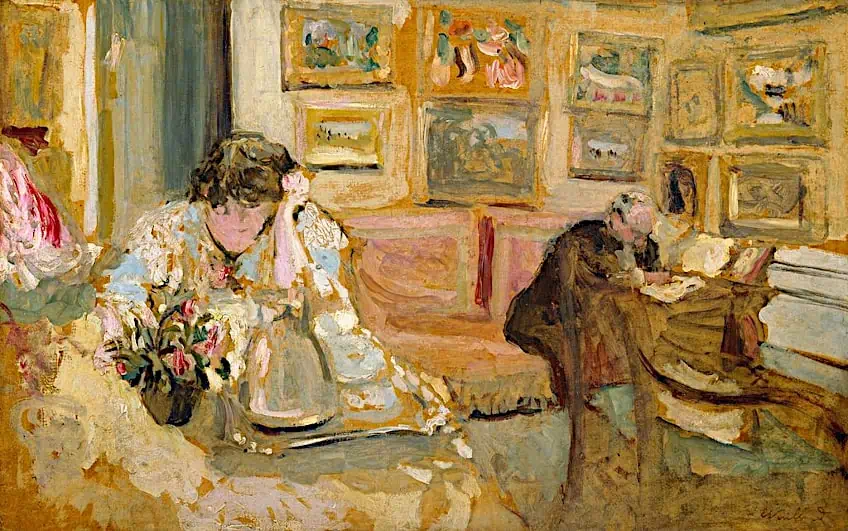 Jos and Lucie Hessel in the Small Salon, Rue de Rivoli by Édouard Vuillard (c. 1900 – 1905); Édouard Vuillard, CC0, via Wikimedia Commons
Jos and Lucie Hessel in the Small Salon, Rue de Rivoli by Édouard Vuillard (c. 1900 – 1905); Édouard Vuillard, CC0, via Wikimedia Commons
Sfumato
In contrast to impasto painting, the sfumato painting technique aims to create a smooth and expertly blended surface. This technique aims to blend colors and shading without producing a noticeable transition or edge between them. The final effect has color gradients and hazy outlines that give the whole piece a softer feel. Because of how much blending this method requires, oil paints are usually ideal due to their slow drying time.
Tenebrism
Tenebrism is a dramatic painting method that is similar to chiaroscuro as both methods use high contrast between well-lit subjects against dark backgrounds. Chiaroscuro aims to create depth using light and dark shadow; however, tenebrism goes fully black producing a more striking but less realistic effect.
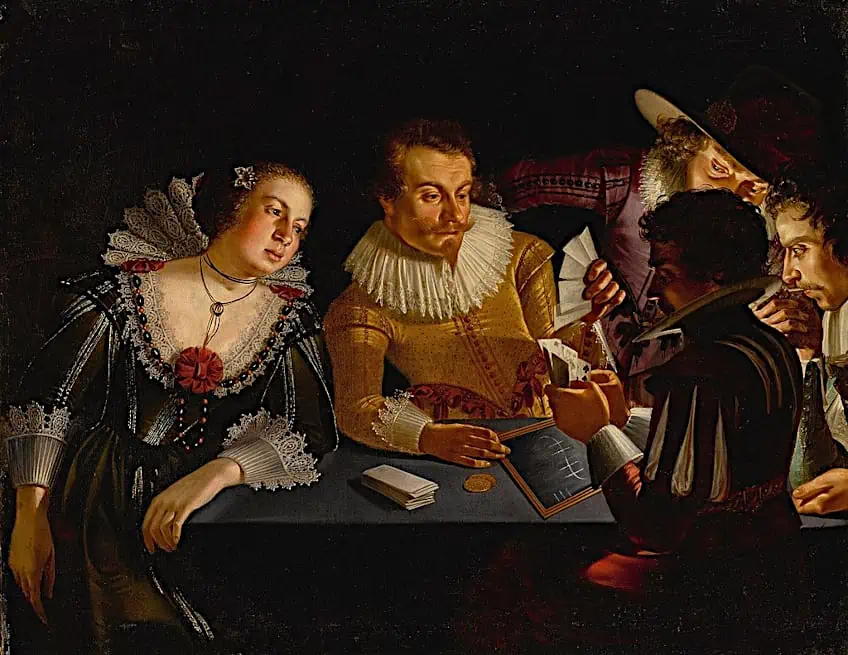 Card Players attributed to Adam de Coster (between 1607 and 1643); Attributed to Adam de Coster, Public domain, via Wikimedia Commons
Card Players attributed to Adam de Coster (between 1607 and 1643); Attributed to Adam de Coster, Public domain, via Wikimedia Commons
Mediums
There is a wide range of mediums available for artists to use in their pieces. Whether you prefer painting, drawing, collage, or even creating digital art there is a medium that is right for you.
Painting Mediums
Some of the most popular painting mediums include acrylic, tempera, watercolor, oil, and gouache. There are different types of paint for art styles available and they will all produce different effects in your piece.
Acrylic painting is a very popular painting medium. It is water-based, fast-drying, and can be used on a wide range of surfaces.
Acrylic paints can produce different effects from a watercolor consistency to more oil paint textures. Different kinds of paints and painting mediums are also available for acrylics, only adding to their versatility. Oil paints are another widely used medium with a lot of versatility. This paint is oil-based and slow-drying, giving it superior blending ability and vivid colors. Like acrylics, oil paints also come with a variety of mediums that can be added to change their properties and finish.
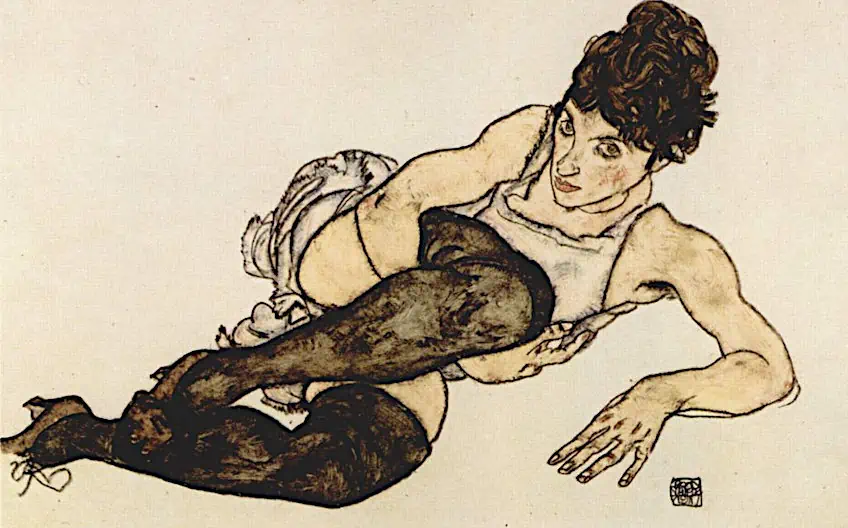 Woman with Green Stockings by Egon Schiele (1917); Egon Schiele, Public domain, via Wikimedia Commons
Woman with Green Stockings by Egon Schiele (1917); Egon Schiele, Public domain, via Wikimedia Commons
Tempera paints are made by mixing pigment with a water-soluble binder such as egg yolk. This is why this paint is also called egg tempera, and it is one of the longest-lasting painting mediums, and has been traced all the way back to 1st century BCE in Egypt. Although tempera is a paint largely associated with traditional painting, Modernists such as Egon Schiele used it to great effect. Often in combination with other mediums such as ink. Watercolor paints are an airy and translucent water-based painting medium. Watercolors can produce whimsical and captivating pieces that have an inner glow with more layers. There are even watercolor pencils available that give you the same effect with more precision.
Drawing Mediums
There is an array of drawing mediums, each bringing its own unique effects. Graphite and colored pencils, charcoal, ink, and pastels are all very popular drawing mediums that are used worldwide.
Although charcoal drawing has been seen almost 30 000 years, this drawing technique became widespread around the 17th century.
Charcoal is traditionally made by combining burnt wood, usually willow or grapevine, with a binder of wax or gum. It has a deep black pigment and can be used for both rough sketches and your final piece. Graphite pencils can also be used to create rough work as well as detailed drawings. Both mediums also have great smudging abilities for easy shading. Color pencils are similar to graphite pencils, however, they tend to smudge less making them less messy to work with. Color pencils also give you access to a wide array of colors and finishes.
 At the Salon of the rue des Moulin (Pastel study for MTL.180) by Henri de Toulouse-Lautrec (1894); Henri de Toulouse-Lautrec, Public domain, via Wikimedia Commons
At the Salon of the rue des Moulin (Pastel study for MTL.180) by Henri de Toulouse-Lautrec (1894); Henri de Toulouse-Lautrec, Public domain, via Wikimedia Commons
Ink is a bold drawing medium that is much more versatile than it first appears. Ink comes in a variety of different colors, finishes, and applicators and has been used on many surfaces including canvas, paper, and wood. Ink can be unforgiving, and it takes a lot of practice to use it effectively. On the softer side, pastels are a thick velvety medium that is perfect for producing vibrant pieces. There are many different types of pastels such as soft, hard, water-soluble, oil, and pan pastels.
Other Mediums
Aside from the traditional painting and drawing mediums are other mediums such as collage, encaustic painting, digital painting, and spray painting. Collage involves combining different materials in a way that is visually appealing to create your piece. Aside from paper and paint, collage has also been known to use fabric, photographs, and even parts of other artworks.
Encaustic is another interesting art medium that uses pigmented wax. In encaustic painting, the colored wax is heated and then poured onto a surface where it is brushed and manipulated. Encaustic paintings are then fused using heat to bind the medium.
Spray painting is a medium that has evolved from the traditional aerosol cans to modern spray guns and brushes. Spray painting is often used in graffiti to express emotions and ideas in a large space. Digital painting has become increasingly popular as technology has grown due to the freedom and forgiving nature of the medium. The wide array of tools and the ability to undo mistakes makes it appealing to many.
 Digital Arabesques by Miguel Chevalier (2014); Miguel Chevalier, CC BY-SA 4.0, via Wikimedia Commons
Digital Arabesques by Miguel Chevalier (2014); Miguel Chevalier, CC BY-SA 4.0, via Wikimedia Commons
Experimenting with different painting styles and techniques can not only improve your own, art but also build appreciation for the skills themselves. We hope you have enjoyed this exploration into different art types and techniques, however, there are many more painting techniques and art styles, and the list is always growing. The beauty of art is that you are not restricted to a single style but can grow and explore elements to find your own unique combinations and personal styles.
Frequently Asked Questions
What Are the Different Kinds of Painting Types?
There are seven different types of paintings, which include abstract paintings, allegory paintings, historical paintings, landscape paintings, portrait paintings, religious paintings, and still-life paintings.
What Are the Different Painting Styles?
While there are over 70 art styles, with more being created every day, some of the most influential art styles throughout history include Renaissance, Mannerism, Baroque, Dadaism, Neoclassicism, Romanticism, Realism, Impressionism, Pointillism, Art Nouveau, Fauvism, Expressionism, Cubism, Constructivism, Surrealism, Abstract Expressionism, Pop Art, Photorealism, and Minimalism.
What Are the Different Types of Paint for Art?
There are a huge variety of different kinds of paints available in art. The most popular paints include acrylic paint, oil paint, and watercolors. Tempera and gouache paints are also great options for painting long-lasting and vibrant pieces. Fresco and encaustic painting are less used but offer a lot of unique advantages and effects. Although these are traditionally considered to be drawing mediums, inks and soft pastels can also be used as paint in art.
Megan is a writer and researcher who graduated from the University of Cape Town with a degree in Social Sciences, specializing in Psychology and Environmental Science. Her passion for knowledge and leaving a positive impact has fueled her current work in conscious and sustainable growth in Southern Africa. Megan’s love of nature has also led her to train as an animal behaviorist. She works part-time training and rehabilitating dogs. Megan is interested in the physical and psychological effects of colors in our environment on our mood and well-being. In addition, she is concerned with how art and creativity have been an integral part of human society. Megan van Schoor has been writing blog posts on the topics of painting, drawing, and color theory for acrylgiessen since 2021.
Learn more about Megan van Schoor and about us.
